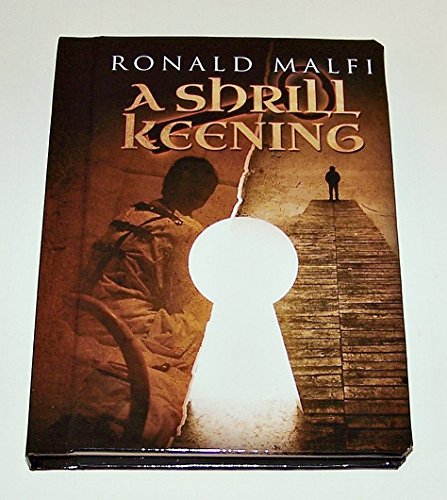
![]() A Shrill Keening by Ronald Malfi
A Shrill Keening by Ronald Malfi
A Shrill Keening opens with a first person narrator telling us about the books in his hospital room, and expanding from there to tell us about the hospital’s library and librarian. It is only when he notes that the list of requested books he hands to the librarian is written in crayon that the reader realizes the nature of the hospital: it is a mental institution. But the reader must also wonder: why is a mental institution catering to a patient’s request for books by and about H.P. Lovecraft and Edgar Allan Poe?
The nature of the narrator’s malady becomes evident when he states that he does not know which part of his life is real and which part he is dreaming. His therapist attempts — poorly — to convince him that his particular form of solipsism, in which he imagines that the therapist blinks out of existence as soon as they part; but the narrator continues to suspect that his dreams, in which he patrols a barren seashore are actually his life. Yet he remembers his life before he was institutionalized, right up to the time he bludgeoned his girlfriend to death.
Still, that seashore bordering an evacuated town is so meticulously detailed. And his interaction one night with another man, who refers to the narrator as the Watcher, is equally detailed, right down to the shiny silver key he hands him. That key is, ultimately, the key to the collision of his dual realities. Now the references to Lovecraft make sense, because it becomes clear to anyone who is familiar with that man’s work that the narrator is watching for Cthulhu to rise from R’lyeh.
True to its Lovecraftian inspiration, Ronald Malfi’s novella is full of atmosphere. His descriptions are detailed and creepy. The sense of doom Malfi communicates is almost tangible, as is the narrator’s confusion. But though the writing is very fine, the plot is lacking. It’s a problem common to Lovecraft pastiches: by definition, no one can describe what happens after the old gods arrive, and so the stories are limited to descriptions of doom and madness.
As far as pastiches go, however, this is a good one. And it’s a good introduction to Malfi’s writing, which moves along at a brisk pace even while lingering over descriptions of eldritch phenomena. Here, for instance, is a description of a bird that makes it seem especially sinister:
As I look around, I am startled to see an impossibly large bird perched on a lamppost gazing out across the parking lot at me. It’s a buzzard or a vulture — is there a difference? — and it looks about as large as a dishwasher. As I stare at it, the thing cranks open its massive wings, the feathers inky black and piebald with cobwebs, and unleashes a cry that sounds disconcertingly like the wail of a pained infant.
That is a description of a perfectly normal, if unpleasant, bird; but Malfi’s description is such that it seems a thing of horror.
Writing like this persuades me to seek out Malfi’s novels. I’m curious to see what he can do when he is not bound by the strictures of the Cthulhu Mythos.



I love the set-up. I wouldn’t mind checking out his novels either.
Really like the excerpt included. Sounds v. dark – will be giving this a read